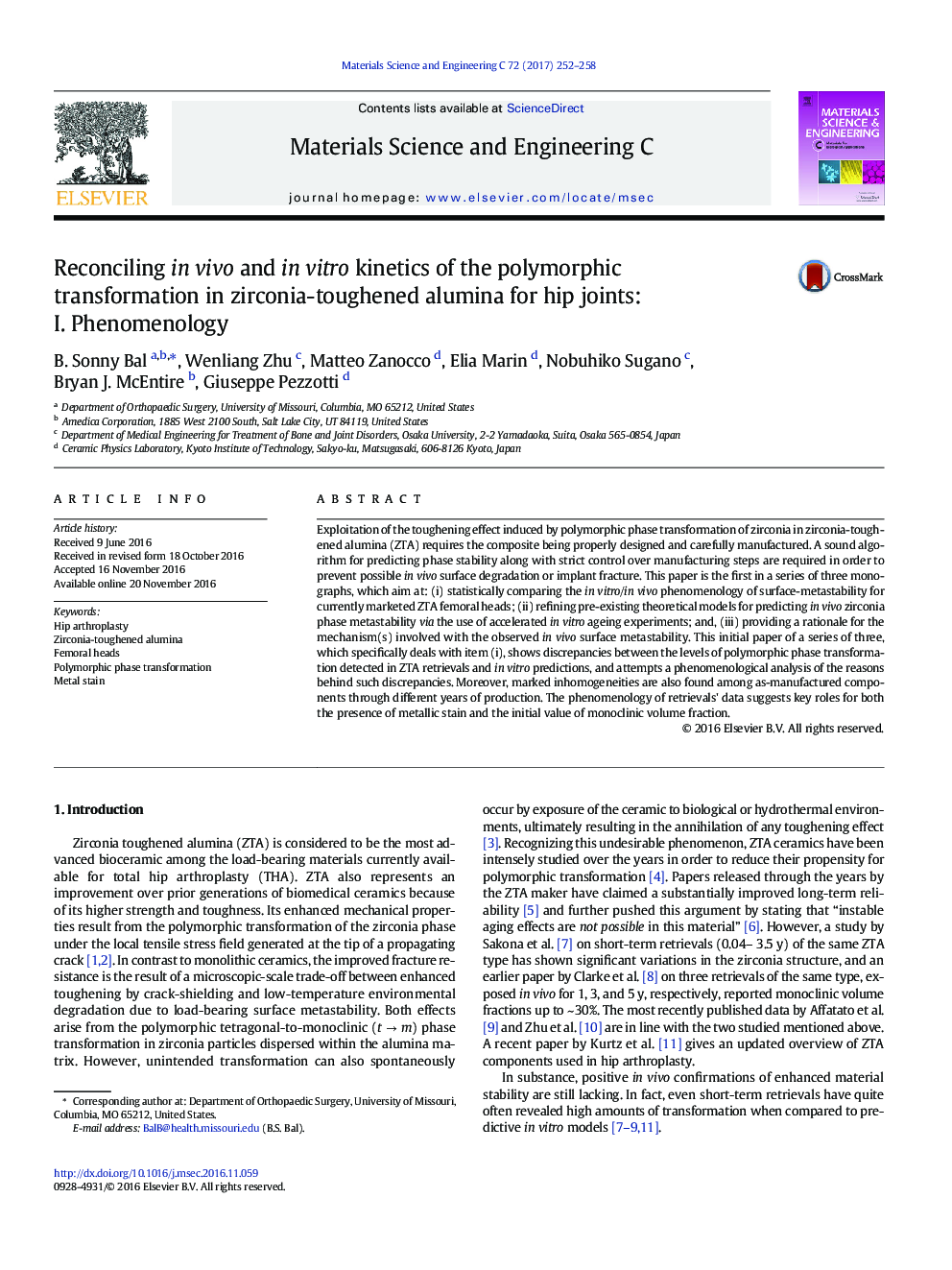| Article ID | Journal | Published Year | Pages | File Type |
|---|---|---|---|---|
| 5435201 | Materials Science and Engineering: C | 2017 | 7 Pages |
â¢ZTA retrievals exhibit more severe degradation than that predicted by in vitro ageing kinetics.â¢Retrievals' data suggest metallic stain as key in accelerating transformation kinetics.â¢The initial monoclinic volume fraction influences the rate of zirconia transformation.
Exploitation of the toughening effect induced by polymorphic phase transformation of zirconia in zirconia-toughened alumina (ZTA) requires the composite being properly designed and carefully manufactured. A sound algorithm for predicting phase stability along with strict control over manufacturing steps are required in order to prevent possible in vivo surface degradation or implant fracture. This paper is the first in a series of three monographs, which aim at: (i) statistically comparing the in vitro/in vivo phenomenology of surface-metastability for currently marketed ZTA femoral heads; (ii) refining pre-existing theoretical models for predicting in vivo zirconia phase metastability via the use of accelerated in vitro ageing experiments; and, (iii) providing a rationale for the mechanism(s) involved with the observed in vivo surface metastability. This initial paper of a series of three, which specifically deals with item (i), shows discrepancies between the levels of polymorphic phase transformation detected in ZTA retrievals and in vitro predictions, and attempts a phenomenological analysis of the reasons behind such discrepancies. Moreover, marked inhomogeneities are also found among as-manufactured components through different years of production. The phenomenology of retrievals' data suggests key roles for both the presence of metallic stain and the initial value of monoclinic volume fraction.
